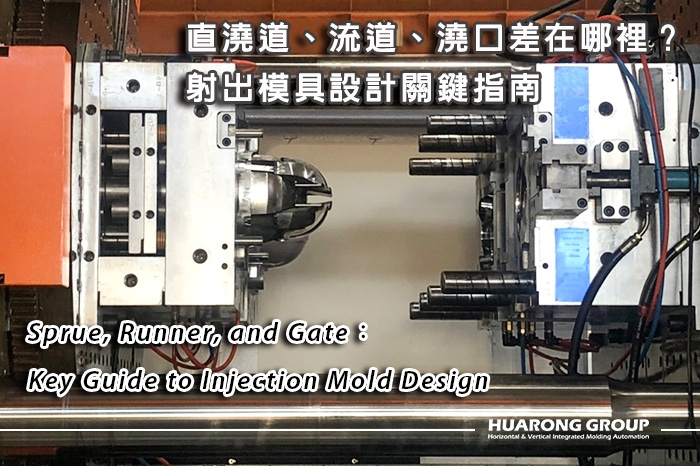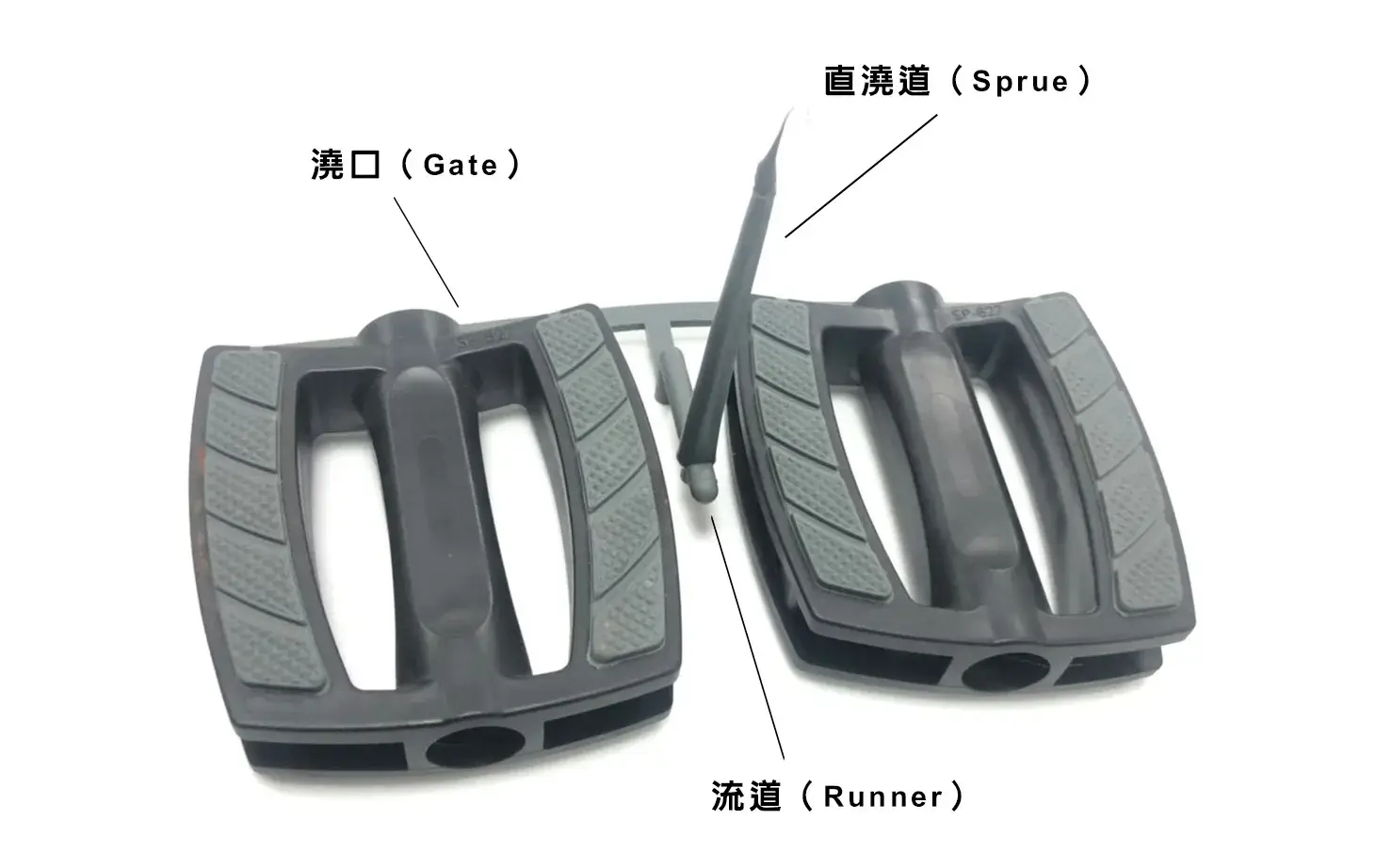Sprue, Runner, and Gate in Injection Molding: A Practical Guide
2025-09-04 08:56:51

The sprue in injection molding plays a deceptively small, but technically critical role in the manufacturing of plastic parts. Serving as the first channel for molten plastic entering the mold, it directly affects flow behavior, cycle time, waste rate, and even final product quality.
In this comprehensive guide, we’ll explore:
- What is a sprue, and how does it work with runners and gates
- Cold vs. hot sprue systems and design best practices
- How sprue design affects machine performance and selection
- Practical troubleshooting and optimization tips
- How Huarong Group helps clients choose the right injection machine based on mold flow characteristics
A sprue is the vertical channel that connects the nozzle of an injection molding machine to the runner system, or directly to the cavity in some designs. As the first point of plastic entry, its geometry governs how well molten resin flows into the rest of the mold.
Sprues are typically conical, with a taper angle of 2°–5° to facilitate ejection. The widest end is matched with the machine nozzle, and the narrow end connects to the runner or cavity.
- Channels molten plastic from the nozzle to the mold
- Maintains flow pressure and temperature
- Initiates distribution across cavities
- Affects cycle time and material waste
- Must release easily during mold opening (draft angle)
While the sprue serves as the initial entry point for molten plastic, the runner and gate systems play equally critical roles in distributing and regulating flow into each mold cavity.
Runners are secondary channels that connect the end of the sprue to the gates of each cavity. They can be arranged symmetrically or asymmetrically, depending on cavity layout, and are typically milled into one or both halves of the mold.
Key runner characteristics:
- Cross-section: Round (least pressure loss), trapezoidal, or rectangular
- Material state:
- Cold runner: solidifies and is ejected with each shot
- Hot runner: kept molten with internal heaters
- Flow balance: In multi-cavity molds, runners must be designed to equalize flow distance and pressure to each cavity
Gates are small openings that connect the runner to the mold cavity. Though tiny in size, their function is critical; they control the speed, pressure, and direction of plastic as it enters the part.
Common gate types:
| Gate Type | Features | Applications |
|---|---|---|
| Edge (Side) Gate | Simple rectangular cross-section | General parts |
| Submarine (Tunnel) | Angled under parting line, automatically trims | Mass production, aesthetic parts |
| Pinpoint Gate | Very small opening, minimal vestige | Multi-cavity, cosmetic applications |
| Fan Gate | Tapered spread, ideal for wide thin parts | Flat products, improved flow |
| Direct Sprue Gate | Sprue feeds directly into cavity | Single cavity, thick parts |
Design considerations:
- Location: Should be placed near the thickest part of the product
- Size: Must allow complete filling without overpacking
- Vestige: Should not leave large marks if a cosmetic finish is required
- Automation: Submarine gates enable automatic degating for improved efficiency
Together, runner and gate designs govern how efficiently and uniformly plastic enters the mold—ultimately determining quality, cycle time, and waste generation.
These three elements form the mold’s “feeding system,” but they serve distinct functions:
| Component | Role | Typical Location |
|---|---|---|
| Sprue | Primary inlet for plastic from machine | A-plate (stationary side) |
| Runner | Horizontal channel distributing plastic to cavities | Milled into one or both mold halves |
| Gate | Final entry into the mold cavity | Near or on the parting line or sub-surface |
Visualizing this:
- Plastic enters the sprue from the machine nozzle.
- From sprue → runner(s) → individual gate(s)
- Finally, it enters each cavity to form the part.
Sprue and runner design decisions lead to two mold system types
| Feature | Cold Runner System | Hot Runner System |
|---|---|---|
| Heating | Not heated | Heated sprue bushing & manifold |
| Material Waste | Requires trimming and regrind | Minimal to no waste |
| Mold Cost | Lower | Higher |
| Maintenance | Easier | More complex |
| Application | Low to mid-volume, general parts | High-volume, appearance-critical parts |
- For household products, industrial parts, or small batch production, cold runners are more cost-effective.
- For high-transparency, high-precision, or mass production parts, hot runners ensure better stability and higher yield.
Although sprues, runners, and gates are part of mold design, they significantly influence machine selection. At Huarong Group, we work closely with mold makers and customers to evaluate whether a given mold can be effectively and efficiently run on the selected machine.
We request the following mold data to ensure compatibility:
- Mold dimensions → To determine platen size and mold stroke
- Number of cavities → To calculate required shot volume and clamping force
- Cold or hot runner → Affects backpressure, screw design, and injection speed
- Gate type → Influences pressure response and required precision
- Flow length/runner volume → Impacts shot size and energy efficiency
For example, molds with large cold sprues and long runners often demand machines with higher plasticizing volume, while hot runner molds benefit from precise pressure hold control and responsive injection units.
Our servo injection molding machines and two-platen injection machines—like the HRFC and NRH series—are configured with optional screw diameters, injection units, and energy-saving systems to meet these varying needs.
| Problem | Cause | Solution |
|---|---|---|
| Short shot | Undersized or long sprue/runner | Increase diameter, shorten flow path |
| Flash or sink marks | Poor gate placement or size | Relocate gate or adjust dimensions |
| Excessive sprue waste | Oversized cold sprue system | Switch to hot runner |
| High energy consumption | Unoptimized shot-to-part ratio | Downsize machine or reduce runner size |
| Difficulty in ejection | Insufficient draft or rough surface | Add draft angle, polish sprue area |
No. The sprue is the primary channel for plastic to enter the mold, while the runner distributes it to each cavity.
Most thermoplastics (e.g. ABS, PP) can be reground and reused. However, for transparent materials (e.g. PC, PMMA), regrind may affect clarity and properties, so it is not recommended.
Not necessarily. Hot runners are ideal for mass production and high-surface-quality parts, but come with higher mold cost and maintenance complexity. Cold runners are more economical and suitable for general industrial parts or trial production.
Yes. Different gate types impose different requirements on injection speed, injection pressure, and plasticizing capacity, and should be considered during machine selection.
Sprues, runners, and gates may be small features, but their influence spans from the machine nozzle to final part quality. They govern plastic flow behavior, injection pressure, cycle time, and waste—ultimately affecting both cost and performance.
At Huarong Group, our engineering team assists clients from mold review to machine selection. Whether you’re planning a multi-cavity automotive part or a precision cosmetic product, we help configure the right injection molding machine to match your mold’s feeding system and optimize your production line.
- Group Name: Huarong Group
- Brand: Huarong, Yuhdak, Nanrong
- Service Offerings: Injection Molding Machine, Vertical Injection Molding Machine, Injection Molding Automation
- Tel: +886-6-7956777
- Address: No.21-6, Zhongzhou, Chin An Vil., Xigang Dist., Tainan City 72351, Taiwan
- Official Website: https://www.huarong.com.tw/


